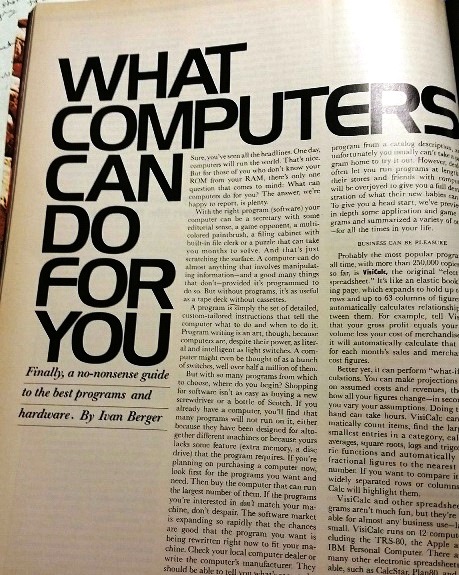I believe this first aired in 2006 - making this system at least 10 years old. I have made contact with the homeowner through the original installer and it turns out that it is still working great. Since then, they have upgraded to NEST thermostats but nothing else has changed. They are considering upgrading the equipment to higher efficiency stuff that is available now but still want to keep SmartZone in place.
Other HVAC,homeowners
HVAC Contractors: Out-Perform the Competition with ZoningSupply.com
Other HVAC, HVAC Contractors, HVAC Industry, ZoningSupplyCommentContractors nowadays are finding that homeowners and business-owners are looking for all the bells and whistles they can reasonably afford and install. Among features like energy-efficient fixtures and home-automation, HVAC zoning is usually near the top of this list. Of course, zoning offers multiple benefits to homes and buildings as it can save energy and provide a custom level of comfort.
As HVAC zoning rises in popularity, homeowners and business-owners are beginning to ask for it by name.
How can contractors make the most of this movement?
It starts with choices. Many contractors have unfortunately limited themselves to zone control systems that sit at the top of the market (as well as the top of the price-range.) This would be great if these “name-brand” zoning systems offered quality, reliability and features that justified the price. This is simply not the case. Contractors who have worked with zoning for a while can attest to this. The good news is that there are now many choices when it comes to zone controls, dampers, and equipment. Contractors and suppliers can now sift through the choices and figure out which systems are the simplest to install, the most reliable, and provide the best customer support.
This is where ZoningSupply.com comes in. ZoningSupply guarantees their products to be the most reliable, the easiest to install, and the most affordable in the marketplace. Hundreds of contractor and homeowner testimonials over the past 10+ years sing praises of the top-notch products they offer.
Here’s why . . .
Contractor-Friendly
The engineers behind ZoningSupply products will tell you that their systems were designed with the contractor in mind. In other words, full-color install guides, screwless wiring, and color-coded LEDs are only the start. If a contractor picks up the phone and talks to Jeff or one of our other tech-support specialists, they’ll be sure to have all of their questions answered quickly but thoroughly.
Easy-to-follow instructions and simple design make for a lightning-fast install.
Ship Direct for Free
Furthermore, ZoningSupply.com can ship anywhere in the U.S. for free. Individual components or entire systems can be purchased on the website and delivered straight to your office or job site,
Affordable
ZoningSupply’s featured SmartZone 2x, 4x, and 2L systems are among the most affordable in the marketplace. This puts money in your pocket and provides savings that can be passed along to homeowners.
Universally Compatible
If a contractor uses ZoningSupply, they can confidently offer retrofit options for virtually any existing HVAC system on the market. This means not having to learn and re-learn various installation procedures. This also means that nearly every home or building in your area can be retrofitted for zoning . . . Think of the opportunities!
With zone control systems, as with any product, there are the good, the bad, and the ugly. In the end, they all must answer to the contractors and ultimately the homeowners. When bidding on projects or marketing their services, contractors should equip themselves with the confidence and reliability that ZoningSupply.com products provide.
More unbiased Zone control discusson on homeenergy
Other HVACComment-------------------------------------------
QUESSTION by Adam Zielinski
Homeowners with forced air duct systems always want to close the registers in rooms they aren't using, and close the doors to those rooms, in the belief that doing so will save energy and money.
I always thought doing this was over-rated and unlikely to save a significant amount of energy or money. I could see doing it for one or two rooms perhaps, but sometimes homeowners close off half of their house or more.
This creates unbalanced air flow in the duct system and likely results in over heating the furnace heat exchanger, and or short cycling the furnace. So the furnace spends a lot of time in start up mode and less time at peak efficiency.
I have not seen any real studies done on this however. I'd like to see some data or research on this.
Reply by dale conner
Adam, most furnaces will move the proper amount of air through the blower and heat exchanger if the furnace cabinet pressure doesnt exceed .5 IWC and the furnace capacity was chosen based on a manual J calculation. This information can be found in the furnace installation manual or IOM (installation,operation,maintenance) that comes with a new furnace. However, this does not mean we are getting adequate air delivery to all of the rooms in the house due to excessive air leakage in the ducts and/or incorrect duct lengths or diameters routed to each room.
-----------------------------------------
QUESTION by Judi Lyall
How about using a motorized damper ?
Reply by dale conner
A single motorized damper can be used to control a zoned area but you also have to install a barometric by-pass damper to prevent over pressurization www.zoningsupply.com
-----------------------------------------
See full discussion: http://homeenergypros.lbl.gov/group/hvac/forum/topic/show?id=6069565%3ATopic%3A7207
Honest discussion on homeenergypros about zoning advantages.
Other HVACCommentAre Zoned Heating/Cooling Systems a Good or Bad Idea?
Excerpt from homeenergypros discussion about HVAC Zone controls.
QUESTION by Jon LaMonte
For starters, I live in Atlanta, Ga and I am not an HVAC pro so this is a serious question that I would like answered for one of my clients. I understand the premise of a zoned system and on the surface, it sounds like a good idea. Then I considered the fact that I have always told my customers that it is a bad idea to close off vents in rooms they are not in because of duct leakage. Also, the second law of thermodynamics simply states the hot goes to cold, so now the unheated areas are doing their best to rob warm air from the heated areas. Finally, if your zoning a single system, aren't you creating on oversizing issue because the unit (that was probably oversized in the first place) is now servicing a smaller area than what it was designed for?
Reply1 by Chris Heenan
Zoning has benefits beyond temp control. Most often the home does not require the full 2 stage heat or cooling as the system only needs to satisfy a portion of the home. So, then if 1/2 the heated air goes through a properly sized and balance bypass, the return air (from home) will mix with warm supply (from bypass) before going thru the system again. You may not need to go beyond 1stage heat (or cool) except in extremes. This is most beneficial in raising supply temps from heat pumps when in winter mode. Most supply vents feel 'cool' to homeowner. Not so when zoned and not call on all zones.
Flip it to cool, and the bypass send dehumidified cooler air across the coil. Decreasing high side pressures and amp draw of compressor. Then the air gets more heat extracted and further dehumidified. Pulling out additional condensate and running less. Remember systems have to be careful not to oversize as dehumidification is crucial to comfort. Dry and cool temps out supply vent. Not too shabby.
Reply2 by dale conner
Zone sytems are rarely installed properly but can be efficient if properly designed. The goal is to be able to set back the temperature a few degrees in a zone that isnt being utilized while keeping another zone comfortable that is being utilized. A single unit with a zone system will have a by-pass duct sytem to dump the air thats been cut off from one zone back into the duct system to be used in the zone that is being used.
*Reply3 by James Jackson on
Have you ever been driving down the interstate hwy and come up on an exit ramp that has traffic backed up? As the traffic backs up and eventually fills the exit with cars you end up with a slight back up on the entire highway. this is the closest scenario i have been able to come up to help people understand why closing doors and vents is a bad idea. if you have a run off of a main trunk and you close the outlet or register you will cause the air to back up into the trunk causing turbulence in the trunk line resulting in a decrease in air flow in other areas on the system. this can also cause multiple other problems like pulsing and excessive noise from the increase in pressure.
another thing to remember when you shut doors in a home with no return air you cause a difference in pressure in the home. The room you have closed is now significantly positively pressurized and the house is now under a negative pressure. This why some homes have the doors undercut by 3-4 inches trying to allow the air to get back to the return.
Ok as far as the zone system goes... There is so much more thought involved in properly setting up a quality zone system that i see very few done correctly. If you want to do one correctly you first need to make sure you are using a multi-stage HVAC unit so the unit can run on low speed if it is only conditioning one zone. A bypass or crossover duct with a barometric damper is needed if you are conditioning a small zone and the air handler is still supplying too much air, but if you are going the zone route don’t use contractor grade units and piece it together with a simple zone controller. Get a high efficiency v speed unit that is designed for this application.
But what happens when you change the temps in a zone in the house 4-5 degrees?? Energy moves from hot to cold so you end up indirectly heating or cooling the entire space regardless. This brings us to another scenario. The return air in the zone that is off. My experience with working on correcting issues with homes using zone systems has been the returns are never dampered so if the zone is completely shut off you have just installed a permanent blower door. if the zone is off one you are returning hotter or colder air to the system and two you are causing that zone to have a negative pressure.
Just some things to think about !!
Learn more at www.zoningsupply.com
---------------------------------------------
BETTER with Zoning done right!
Single thermostat can have issues
My editorial conclusion:
Zoning CAN be effective if and ONLY if it's designed and installed properly. This means ducts, dampers, equipment size (tons). It also means the right zone panel setup with energy saving features like SmartZone. Finally, to make zoning work best and comfort control and energy savings, the home owner must properly control the thermostats. Zoning isn't a "set-it-and-forget-it" system, it must be managed to be effective. More articles about zoning
See full discussion: http://homeenergypros.lbl.gov/group/hvac/forum/topic/show?id=6069565%3ATopic%3A7207
Wireless or Wifi Thermostats... What's the difference?
homeowners, Products, thermostatsCommentDespite often being used interchangeably, wifi and wireless thermostats refer to 2 very different types of devices.
Wifi stats (like the Nest or Ecobee) have surged in popularity over the last few years. Wireless stats have actually been around for a quite a while but are not quite as popular. Both types of devices perform the same basic function of controlling your heating and cooling unit as the room’s temperature changes. Both can be programmable and have touch-screens. Both can help you reduce energy consumption, especially when paired with a zoning system like SmartZone.
Key Differences:
Wireless thermostats can essentially be placed anywhere in your home. Think of it like a remote control for your HVAC. They do not need to be WIRED to the wall or to the HVAC unit.
WiFi thermostats are not wireless and are generally wall-mounted. They enable users to control the thermostat remotely from a phone, computer, or tablet. In some areas, even the local energy companies can request access to your wifi stat.
The differences are as simple as their names imply. Wireless stats operate without being wired to the wall or system. Wifi stats are stationary, but can be controlled from peripheral devices.
Benefits:
A person in the market for a wireless thermostat is looking for a device that can be placed anywhere in the home and not necessarily on a wall.
A person in the market for a wifi thermostat is looking for the ability to control their thermostat from anywhere. They might also be looking for the benefits that come with having your stat connected to the internet. Some top of the line wifi thermostats can display weather info, news headlines and more. They can also integrate with various home-automation systems.
After looking at the benefits of the 2 types of devices, it’s easy to see why wifi thermostats have out-paced wireless thermostats in popularity. However, both inventions are remarkable examples of how the HVAC industry is racing forward to meet the comfort and convenience requirements of 21st century homes and buildings.
For more information about innovative thermostats and HVAC energy-efficiency, visit:
The End of "One-Size-Fits-All" Heating and Cooling
Zone Control Info, ZoningSupply, Other HVAC1 Comment"Smart" Vents - hype or innovation?
Other HVACCommentRetro thermostat... 1982 Electronics Guide review of Magic-Stat
Other HVAC1 CommentPublished in Playboy's Electronic Entertainment guide in Fall 1982.
This is off of our normal subject but I came across this old magazine that includes other articles like "There's more to life than Pac-Man: How to beat Donkey Kong" and "What computers can do for you" which says that "VisiCalc is the most popular program of all time with 250,000 copies sold". And it included a scathing review of this Magic-Stat product. Sold for $79 mail order. At first glance, I thought it was just another ugly thermostats in a long history that still goes on today. Then i read the article which explains a "LEARN" mode that makes it easier to set much like the nest would do decades later. Also, it claims to have what is now reffered to as "adaptive recovery". This is where the thermostat starts the equipment before the set time so it can get the home to temperature at a specified time instead of just starting to get to temperature at the time of setpoint. I haven't done any fact-checking, but it says they are the first thermostat to do this... too bad it took 20 years for this to become a more standard feature.




Here are a few more pics I took of the magazine...i claim no rights or ownership of any of this material.










